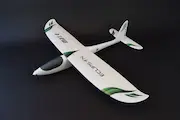Introduction
As a developer, I've always been fascinated by how computers can "see" and interpret the world around us. Recently, I decided to dive into the world of computer vision and experiment with OpenCV, a powerful and widely-used library for image processing.
In this blog, I’ll share my experience of building a simple image processing project using OpenCV, the challenges I faced, and the lessons I learned along the way.
Setting Up the Project
The first step was setting up the development environment. I chose Python because of its simplicity and the extensive support it has for libraries like OpenCV. Here’s how I started:
Installed OpenCV using pip:
pip install opencv-pythonFound a sample image to work with and loaded it into the project.
The ease of installation and OpenCV's intuitive API made the setup process smooth. Within minutes, I was ready to process my first image.
The Project: A Simple Image Filter
The idea for my project was to take an input image and apply some basic filters like grayscale conversion, edge detection, and blurring. Here's a step-by-step breakdown of what I did:
1. Reading the Image
The first thing I did was load an image using OpenCV’s cv2.imread function. It was surprisingly straightforward:
import cv2
# Load the image
image = cv2.imread('input.jpg')
cv2.imshow('Original Image', image)
cv2.waitKey(0)
cv2.destroyAllWindows()
2. Converting to Grayscale
Next, I converted the image to grayscale. This is one of the simplest but most effective transformations:
# Convert to grayscale
gray_image = cv2.cvtColor(image, cv2.COLOR_BGR2GRAY)
cv2.imshow('Grayscale Image', gray_image)
cv2.waitKey(0)
cv2.destroyAllWindows()
3. Applying Gaussian Blur
To reduce noise and smooth the image, I used Gaussian blur. This was as simple as calling one function:
# Apply Gaussian blur
blurred_image = cv2.GaussianBlur(gray_image, (5, 5), 0)
cv2.imshow('Blurred Image', blurred_image)
cv2.waitKey(0)
cv2.destroyAllWindows()
4. Detecting Edges with Canny
Finally, I used the Canny edge detection algorithm to highlight the edges in the image:
# Apply Canny edge detection
edges = cv2.Canny(blurred_image, 50, 150)
cv2.imshow('Edges', edges)
cv2.waitKey(0)
cv2.destroyAllWindows()
Challenges Faced
While working on this project, I encountered a few challenges:
- Understanding Image Channels: Initially, I was confused about how OpenCV handled image channels (RGB vs. BGR).
- Choosing Parameters: Finding the right parameters for functions like
GaussianBlurandCannytook some trial and error. - Working with Image Paths: Ensuring the image file path was correct and handling errors when the file was missing required extra attention.
Lessons Learned
This project taught me a lot, not just about OpenCV but also about image processing as a whole:
- Experimentation is Key: Trying out different filters and parameters helped me understand how each transformation works.
- Start Simple: Starting with basic operations like grayscale conversion and blurring built a solid foundation for more advanced techniques.
- Visualization Helps: Displaying intermediate results using
cv2.imshowmade it easier to understand what each step was doing.
Conclusion
My journey with OpenCV has just begun, but building this simple project has been an incredibly rewarding experience. OpenCV’s powerful and easy-to-use API makes it an excellent tool for anyone interested in computer vision or image processing.
If you're just starting with OpenCV, I highly recommend working on a small project like this to familiarize yourself with the basics. It’s amazing how much you can learn from a few lines of code.
Final Code
Here’s the full code for the project:
import cv2
# Load the image
image = cv2.imread('input.jpg')
cv2.imshow('Original Image', image)
cv2.waitKey(0)
# Convert to grayscale
gray_image = cv2.cvtColor(image, cv2.COLOR_BGR2GRAY)
cv2.imshow('Grayscale Image', gray_image)
cv2.waitKey(0)
# Apply Gaussian blur
blurred_image = cv2.GaussianBlur(gray_image, (5, 5), 0)
cv2.imshow('Blurred Image', blurred_image)
cv2.waitKey(0)
# Apply Canny edge detection
edges = cv2.Canny(blurred_image, 50, 150)
cv2.imshow('Edges', edges)
cv2.waitKey(0)
cv2.destroyAllWindows()



